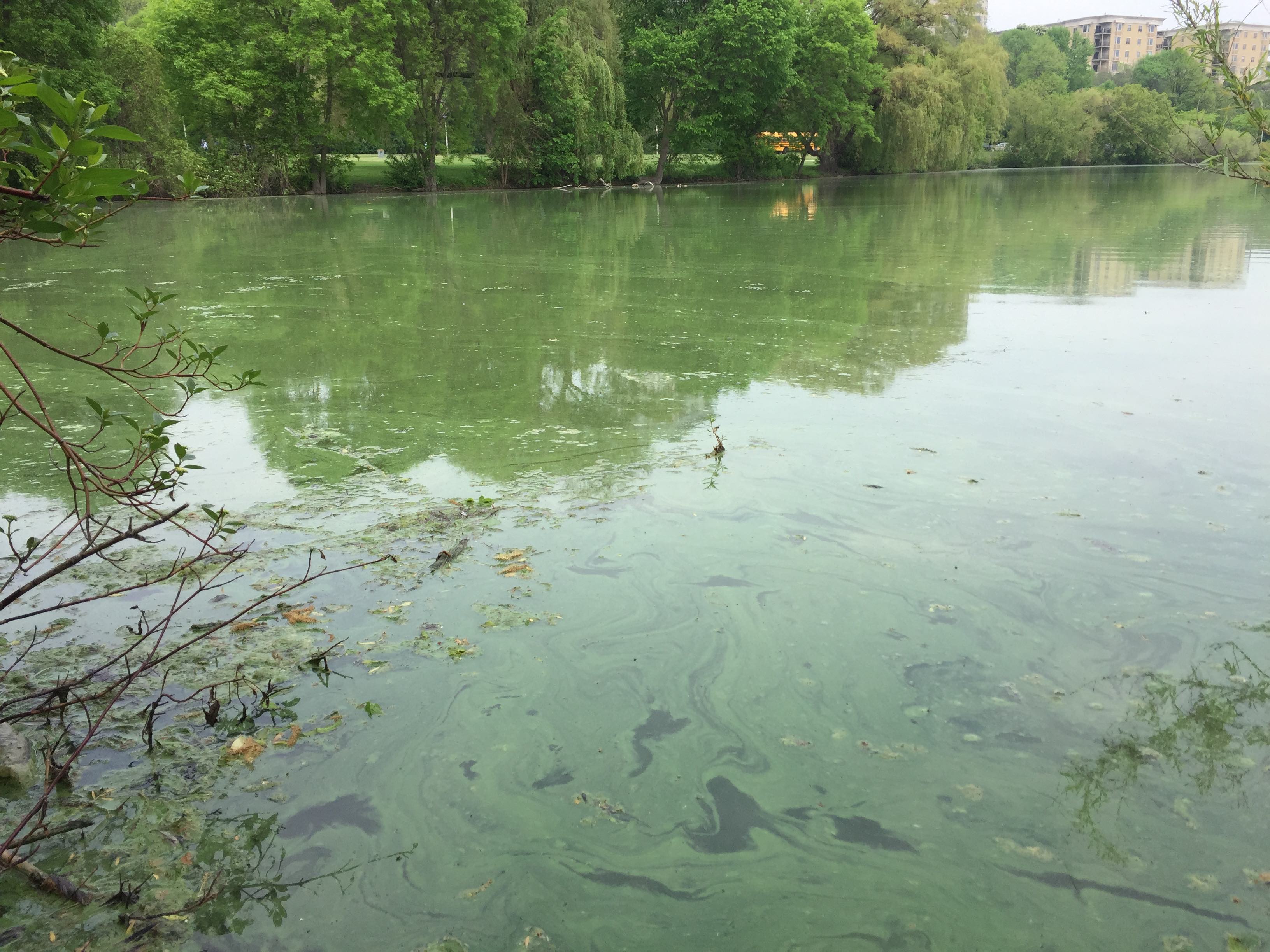December 28, 2022
Development of the Panther Buoy continues. Wilson and I presented on the latest electronics at the AGU meeting. Our posters are below.
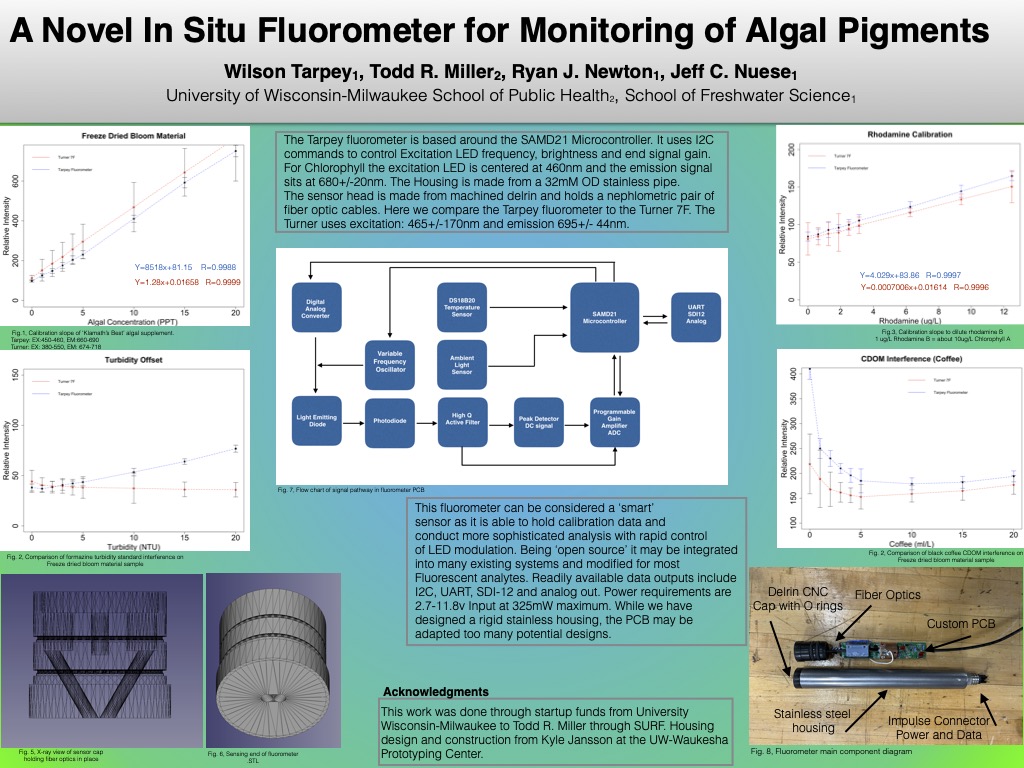
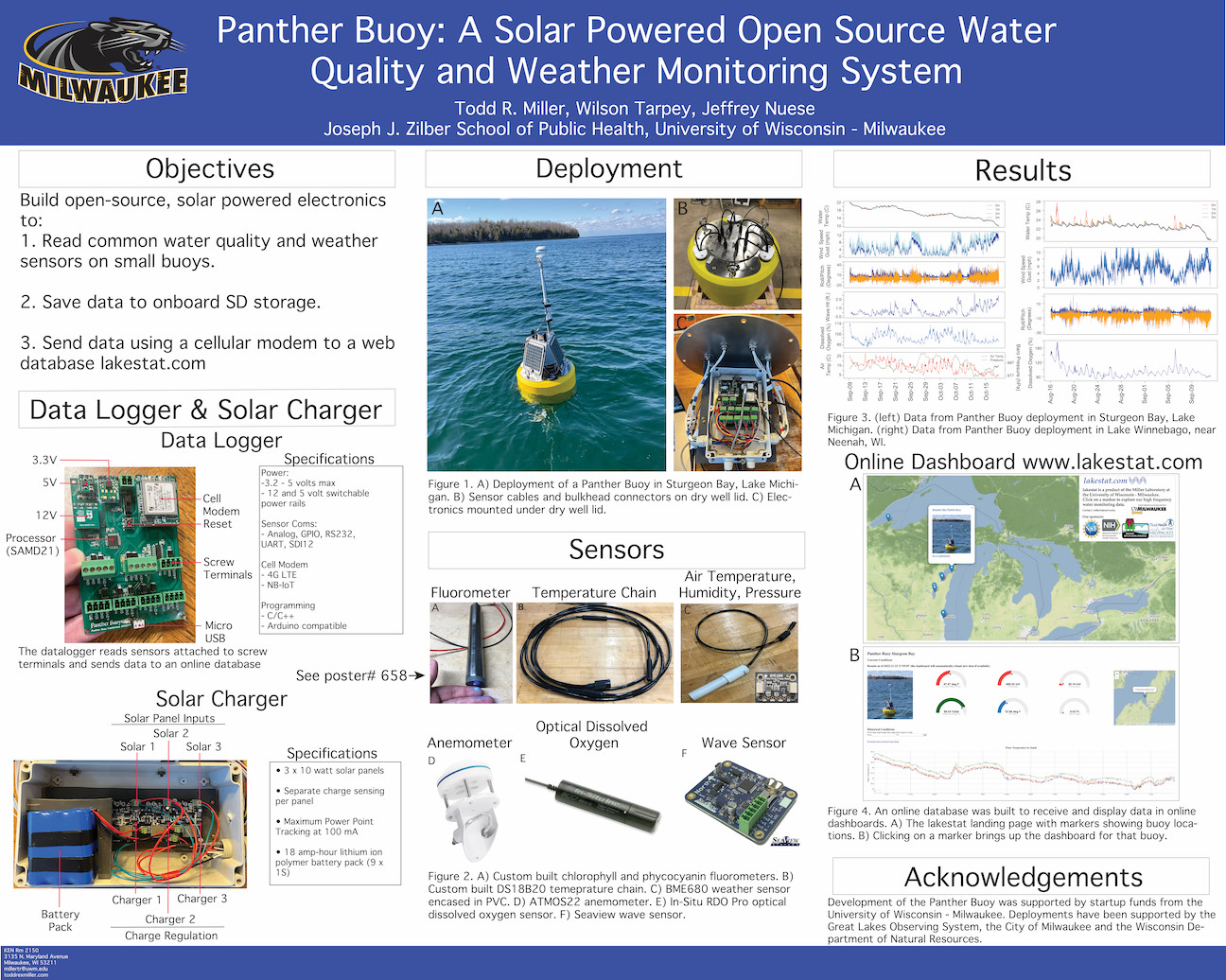
September 16, 2019
its been too long since I gave a news update. Today we deployed a buoy in Lake Winnebago, WI. It's late in the season for a buoy deployment, but we had the opportunity with some support from the DNR to do this as a trial run. We have little funding right now to sustain this so will be looking for ways to continue in the future. This buoy is a Fondriest CB-450 platform with a Campbell CR1000 data logger and Sierra Wireless RV50 modem for cellular telemetry. Sensors include a Licor spherical PAR sensor, Turner 7F phycocyanin and chlorophyll fluorometers, an R.M. Young anemometer, and a YSI 600xl sonde for water temperature, turbidity, and conductivity. In addition, we have added our own system, the SAIL (Standalone Aquatic Interface Logger) that measures our thermistor chain, intertial measurement unit (accelerometer, gyroscope, magnetometer), and GPS for location tracking. The SAIL outputs RS232 signals to be read by most dataloggers, in this case a Campbell Scientific CR1000. Next year we will be adding more of our own sensors to the SAIL including fluorometers, wind sensor, and humidity.
A special thanks to Dr. Bart DeStasio of Lawence University for helping with this deployment using his boat. A very fine vessel! And to our very own buoy technician Jeff Neuse.
It was an exceptionally calm day on the lake with a thick fog offering only about 200 feet of visibility. Large Microcystis colonies were happily floating at the surface.
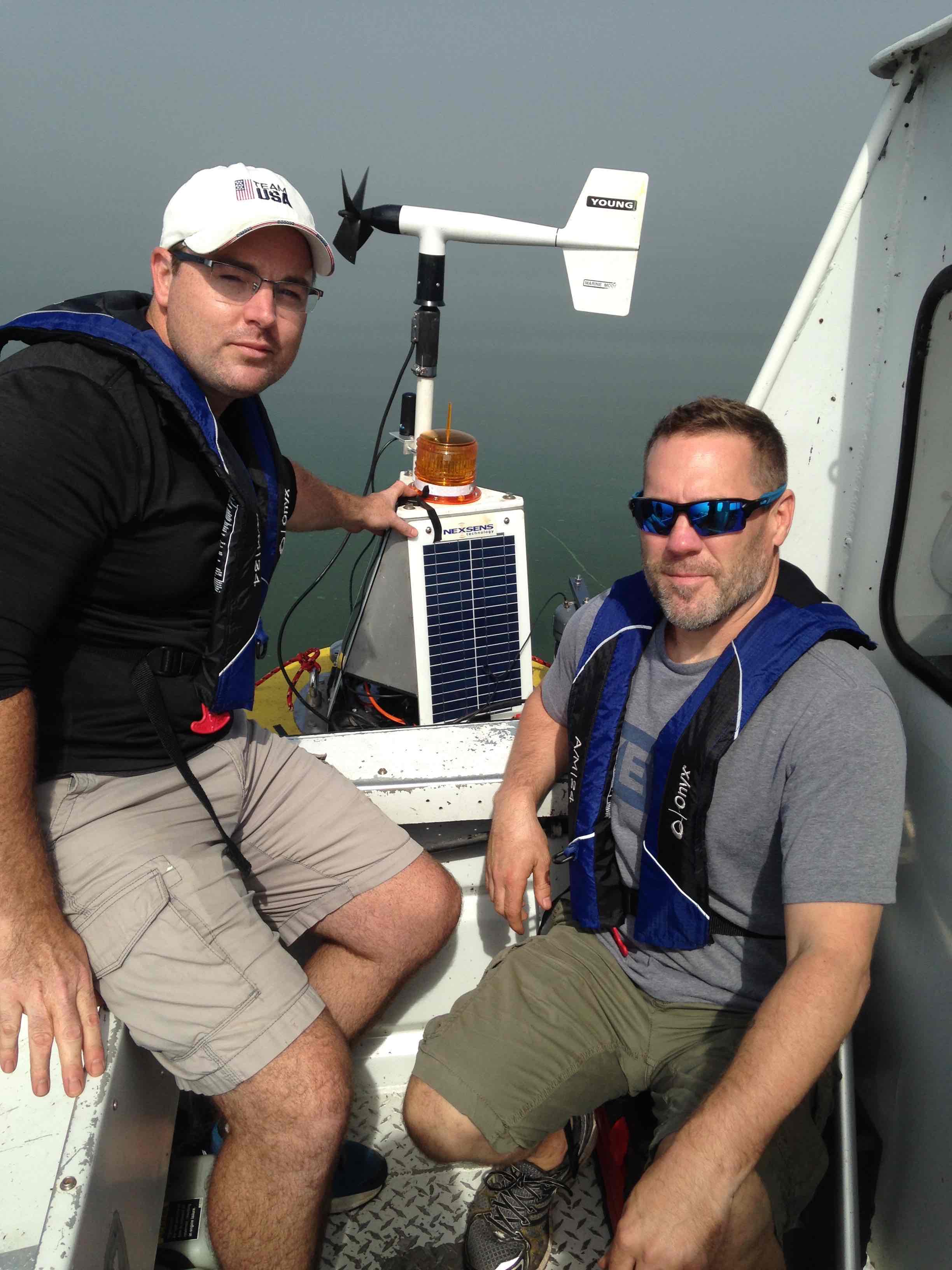
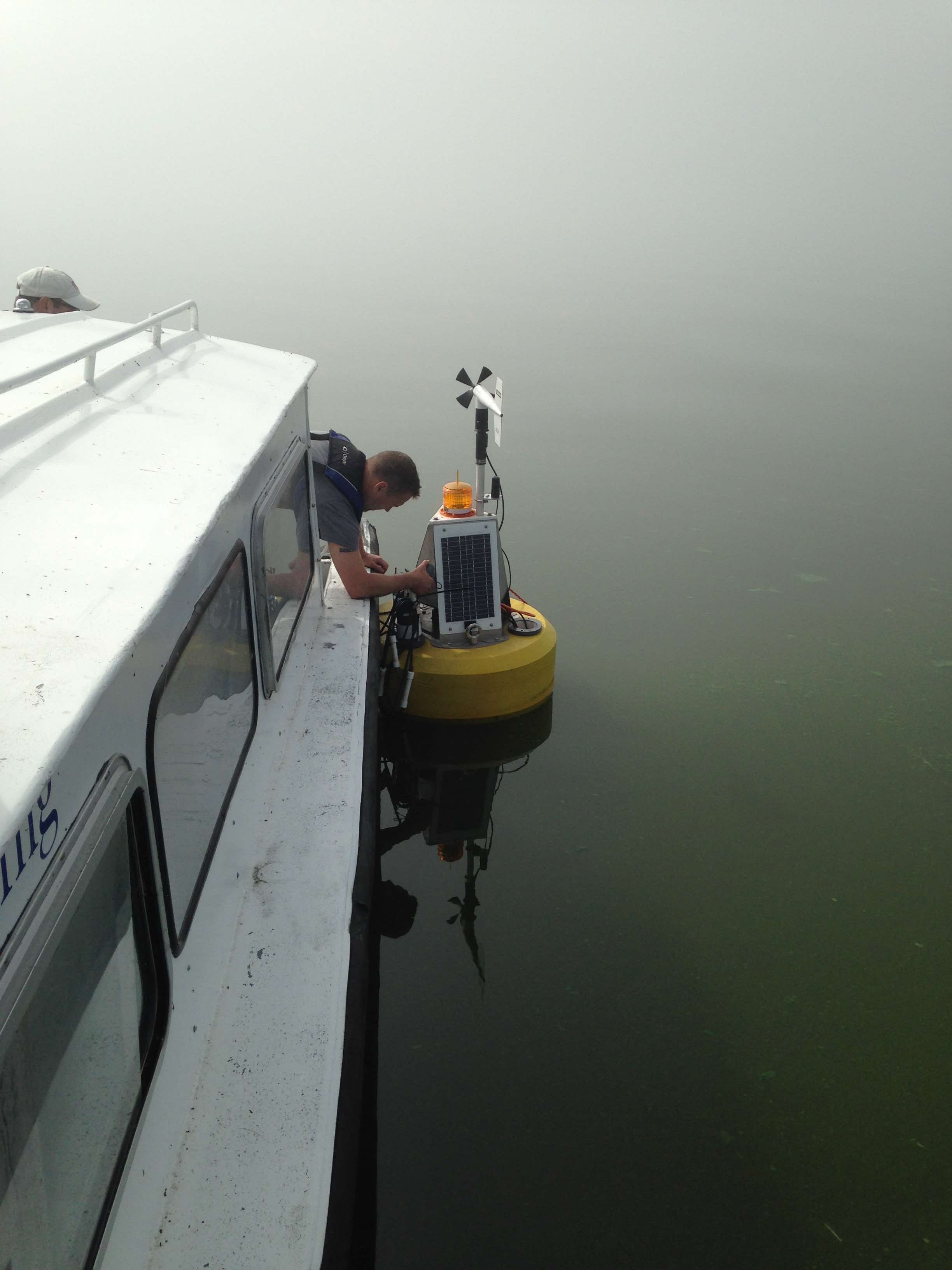
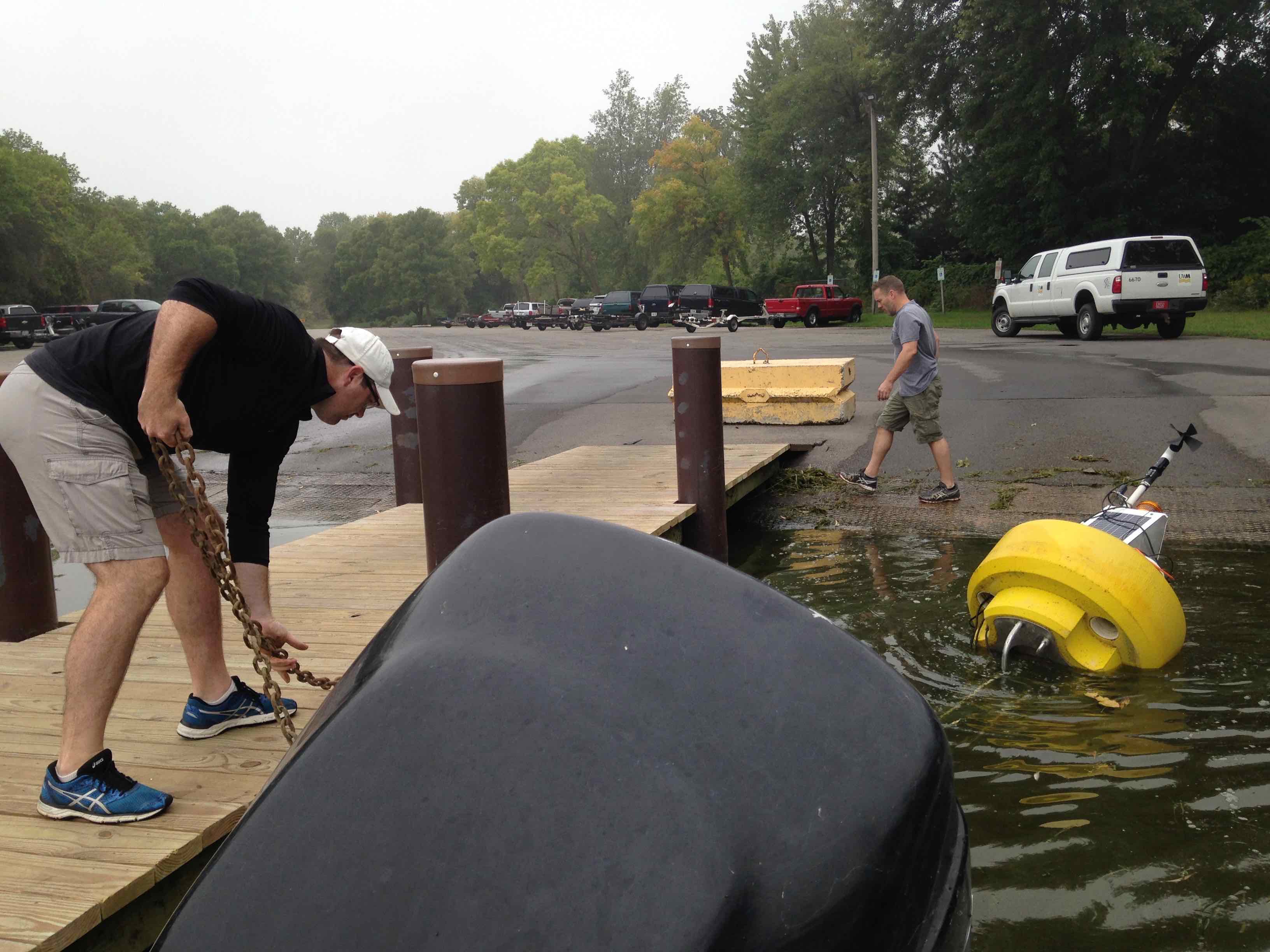




October 28, 2018
All of our data buoys are now in for the winter. Time for making repairs and getting ready for next season. In the meantime we are running many many water samples for toxin analysis.
July 14, 2018: Finishing touches on lakestat
All of our high frequency water monitoring data from buoys is now hosted at lakestat. I added latest edits today.
July 13, 2018: Last buoy deployed for the 2018 season today at South Shore beach in Milwaukee.
Our final buoy of the season got out today. This one is at South Shore beach and mainly measures optical properties of the water here which we hypothesize may be good indicators for sewage contamination. This beach has historically experienced problems with high E. coli concentrations.
June 8, 2018: Green Bay Buoys Deployed
We deployed the Green Bay Buoys this week. Awesome work by Jeff Nuese (UWM Research Scientist) and Chris Houghton (UWGB Research Scientist and Lecturer). UW- Green Bay boat was absolutely awesome, just what we needed! These buoys feature typical YSI, Turner, and Licor sensors but more importantly we have some of our own built low cost, low energy usage sensors. Should be a great season for sensor comparisons and HAB sensing!
Links to Real Time Data:
Green Bay West (Long Tail Point)
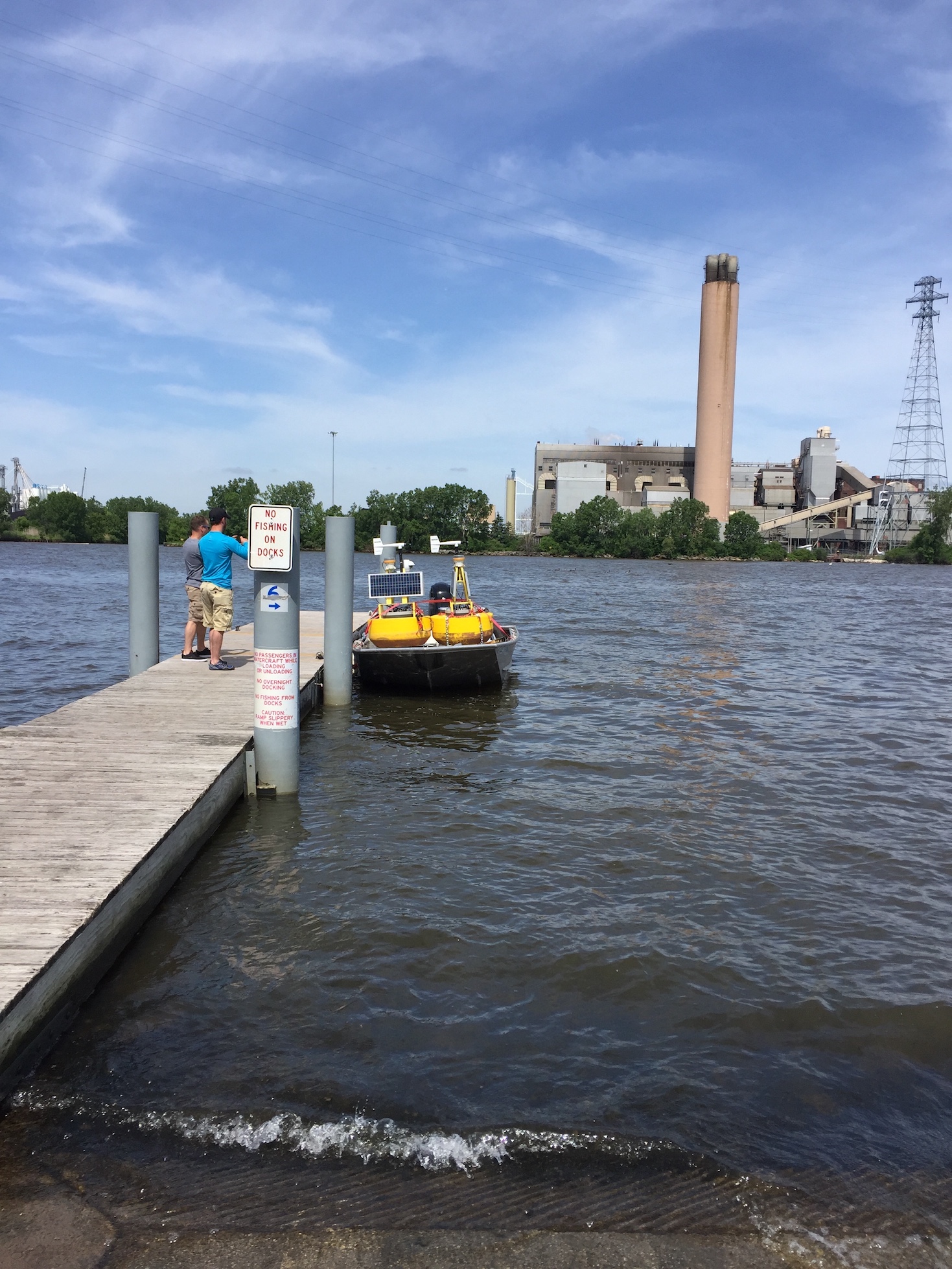
May 30, 2018: Algae getting a head start in 2018
Out sampling Lake Michigan beaches in Milwaukee today as well as Veteran's Park lagoon. It's a bit surprising to see such strong algal bloom activity this early in the year. Cladophora biomass is piling up at some beaches, especially McKinley and it's already completely decayed. This usually doesn't happen until later in the year. We've had a Microcystis bloom in full since mid-May in Veteran's Lagoon. Usually we don't see Microcystis blooms until June in inland water bodies in Wisconsin. Altogether this will be an interesting field season!
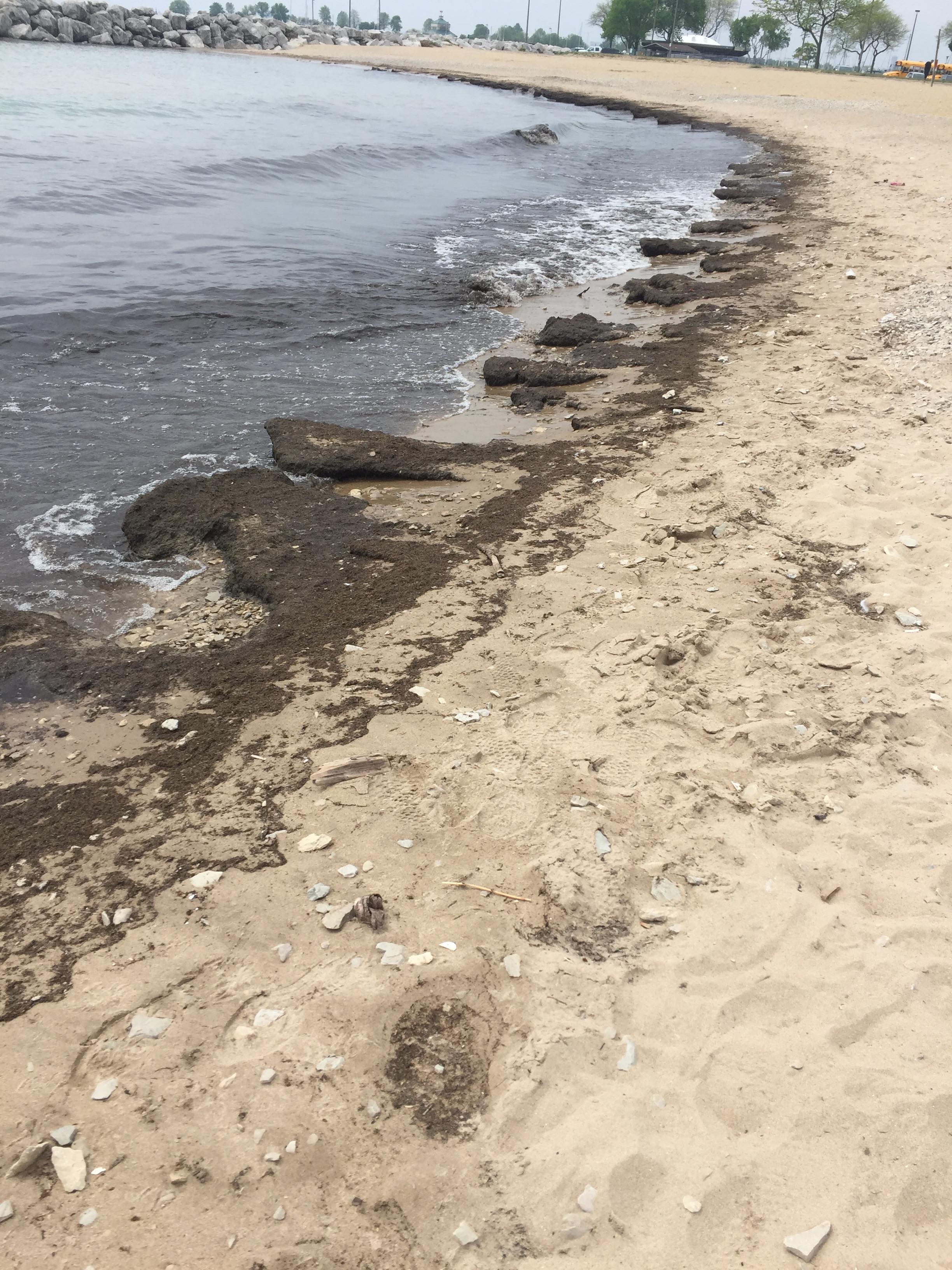
May 27, 2018: Have two yellow buoys, will travel.
We are all set and ready to deploy two data intensive buoys for lower Green Bay. The amount of data generated by these buoys will knock your socks off! Over 73K data points per day, five prototype sensors we built including a novel wave height/direction sensor, temp chain, turbidity sensor, a water color sensor, and PAR sensor. All that plus a new buoycam.
May 15, 2018: First in-water test for new and improved Green Bay buoys.
Our Green Bay buoys got a dip test today to see how they float with their new expanded dry well. All looks good and just about ready to deploy!
May 7, 2018: Cyano blooms already started for 2018!
Water sample from Veteran's Park Lagoon in Milwaukee today. Looks like cyanobacterial blooms are getting started early this year. Very early!
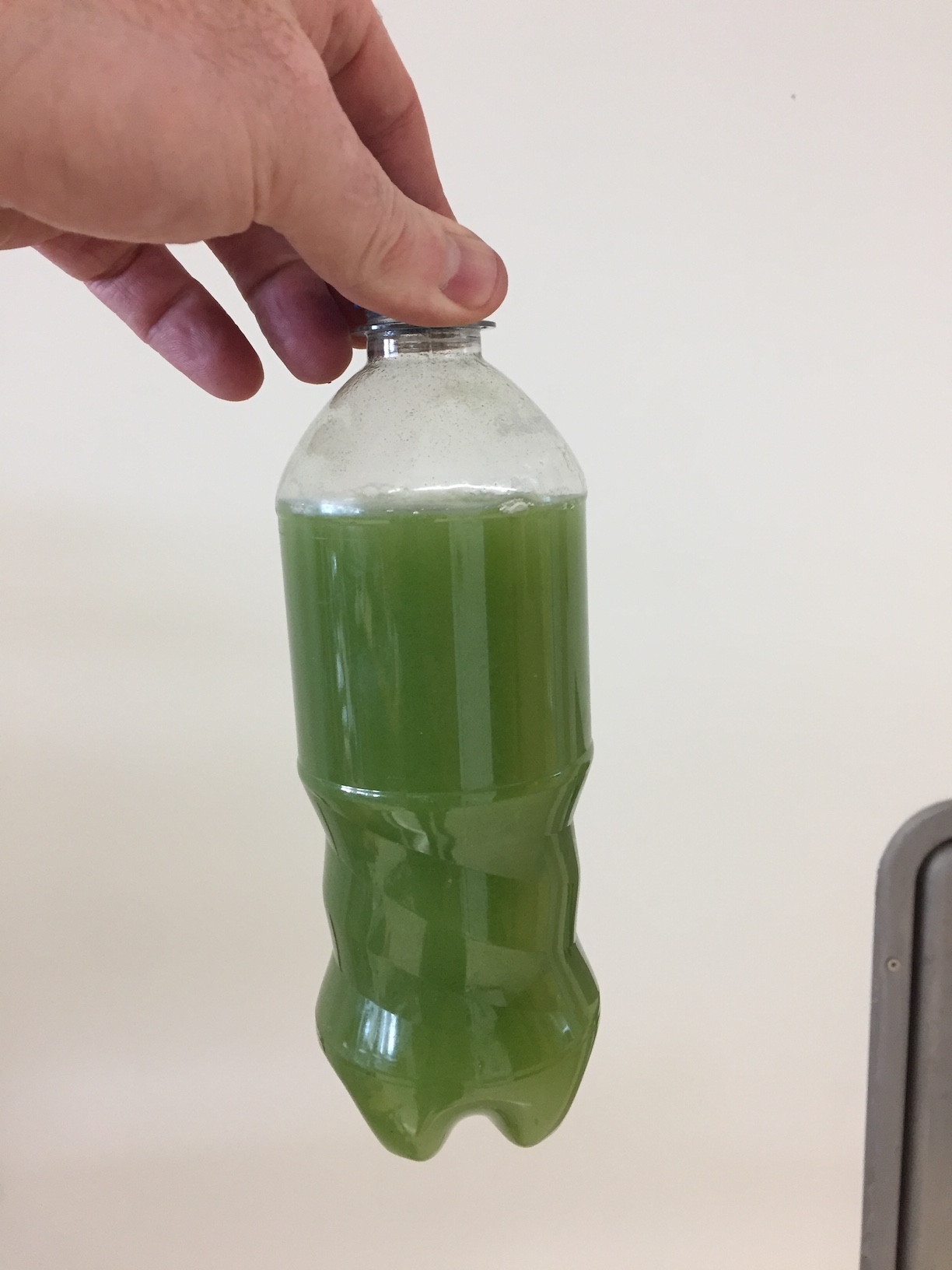
May 6, 2018: Constructing buoy dry wells from sewer pipe
We have been doing some pretty cool modifications to our Green Bay buoys these past few weeks. These were YSI (Endeco) buoys from circa ~1990 (?) now heavily modified by us. Mainly here we are adding new dry wells after having some leaks with the old model (the original buoy had no dry well). In these pictures we are making new dry wells for electronics housings using sewer pipe, sewer pipe flange, and end caps (schedule 80). Buoy technician Jeff Neuse and Assistant Professor Matt Smith are doing the install. Thanks to the SFS machine shop for help with welding and fabrication of metal components. When the buoys are completely together I will post new pictures, but always good to document the process. A lot of work went into these!
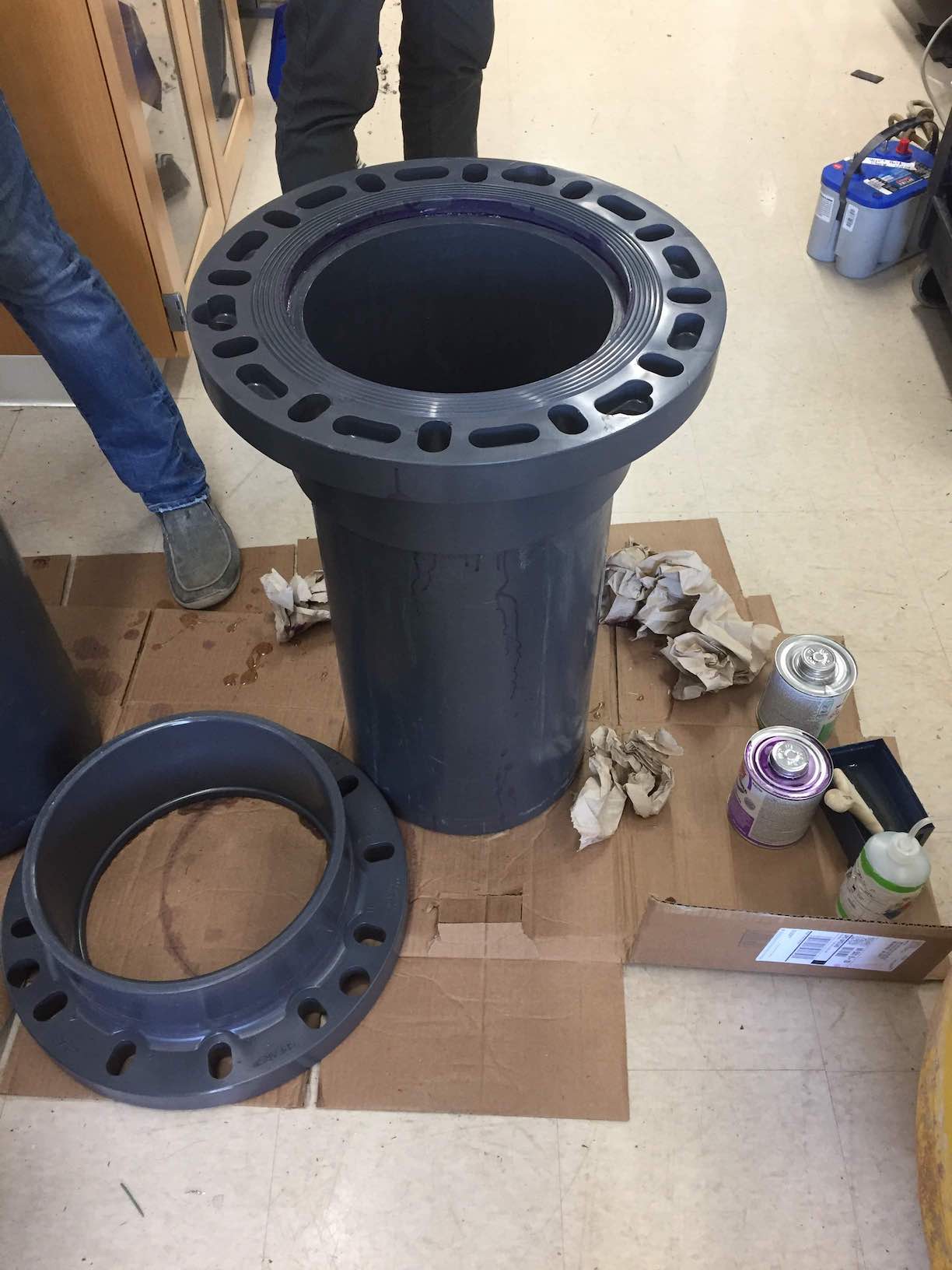
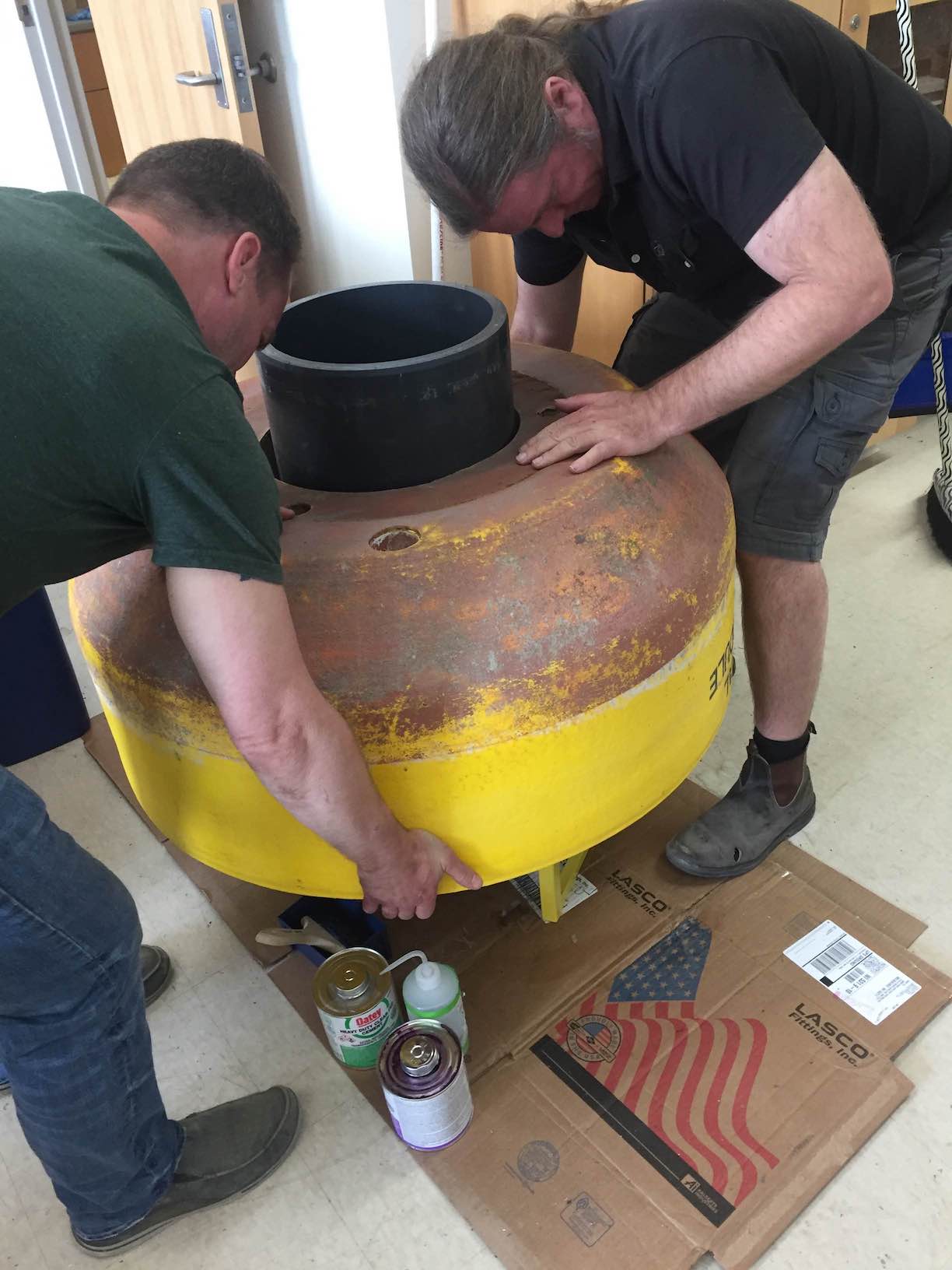
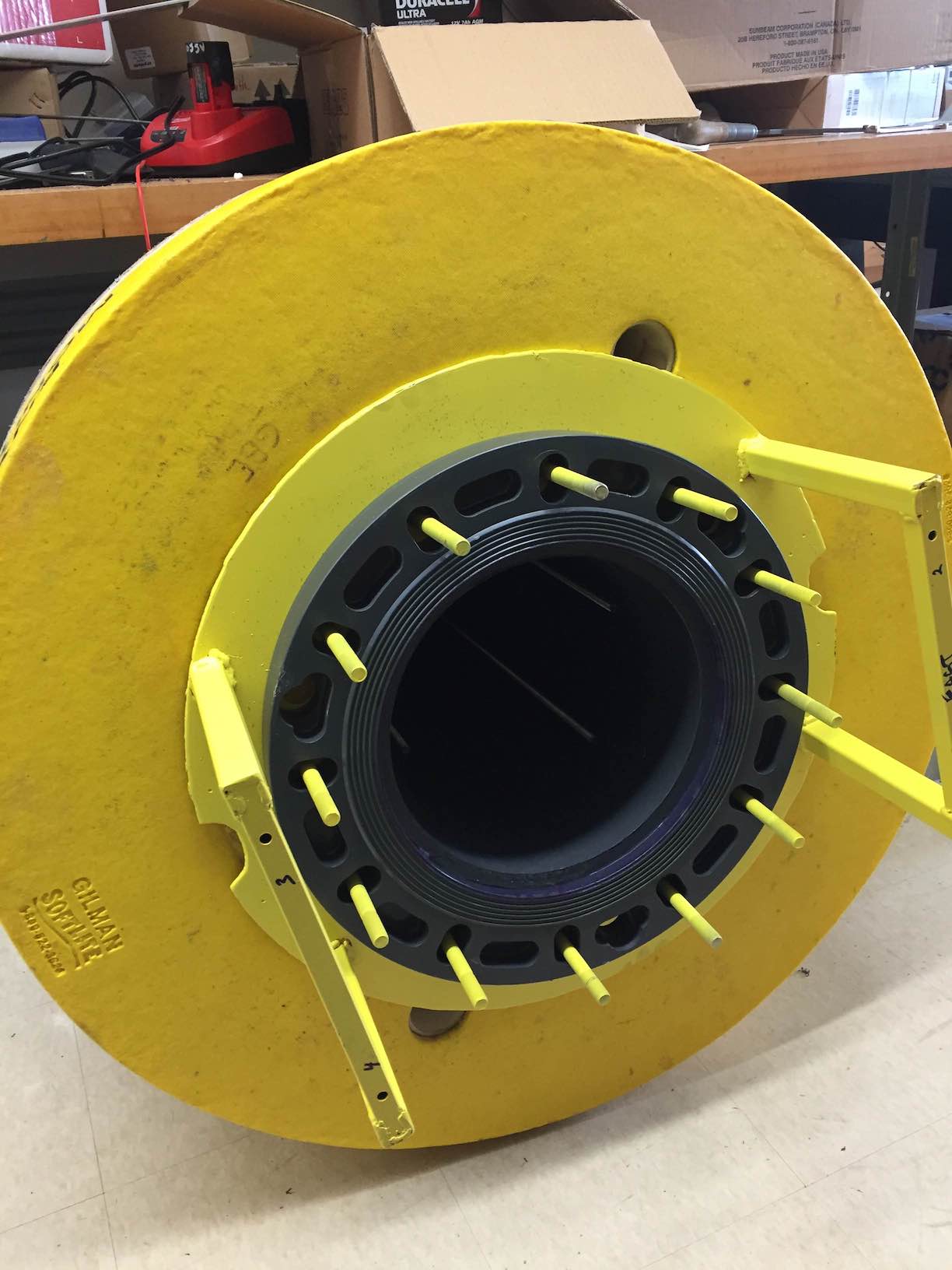
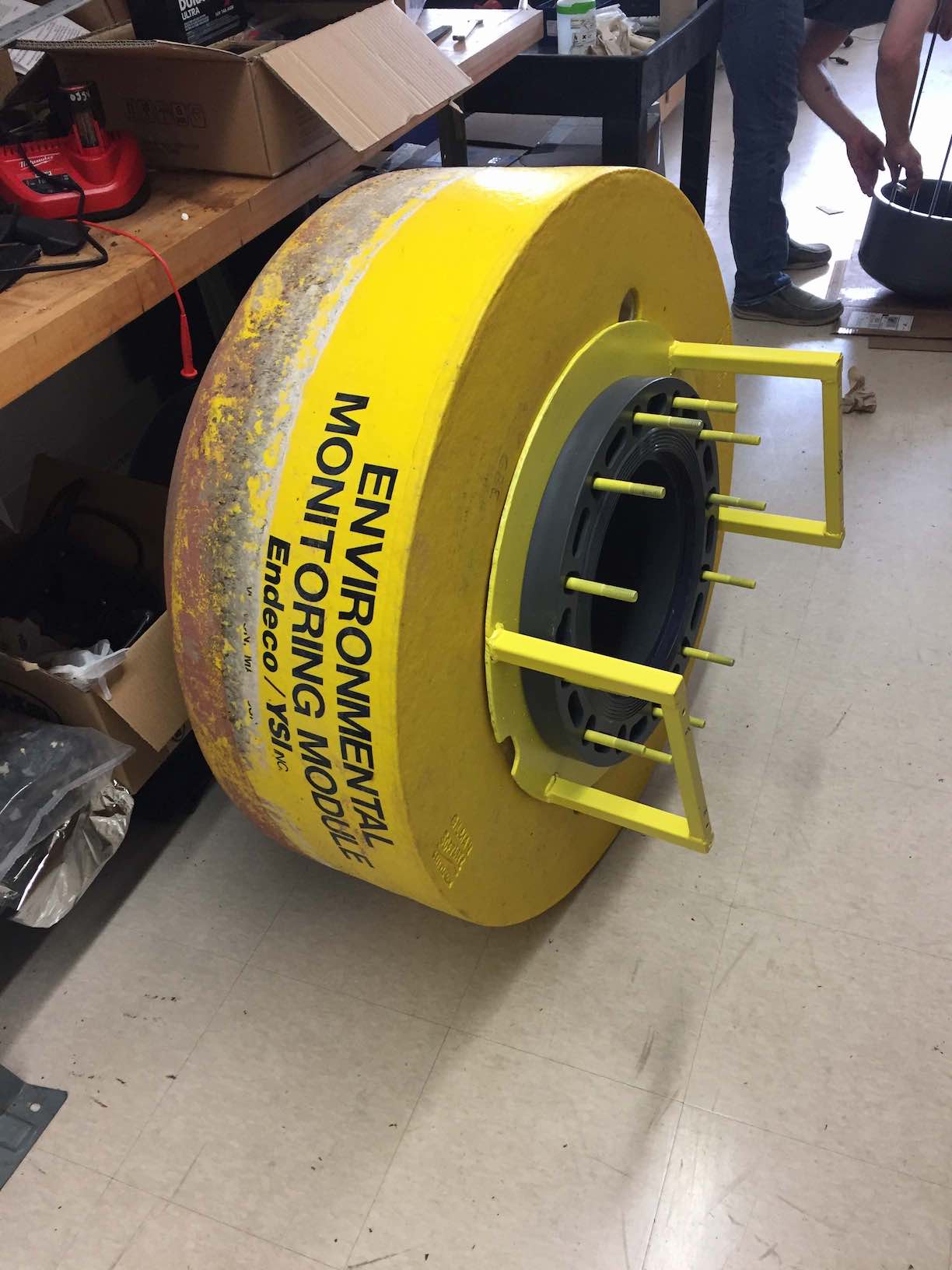
Sewer pipe serves as dry well. Here we just glued on the flange. The flange forms the well hatch along with an end cap.The sewer pipe with flange glued on is inserted into the surlyn foam doughnut float upside down. The pipe will get a rounded end cap to make it water tight.The final piece is the metal ring around the flange that both supports the mast with solar panels and provides mounting screws for the end cap.The completed dry well now sits in the buoy doughnut. Once dry we will attach the final end cap with Teledyne sensor connectors and then bolt on the mast with solar panels
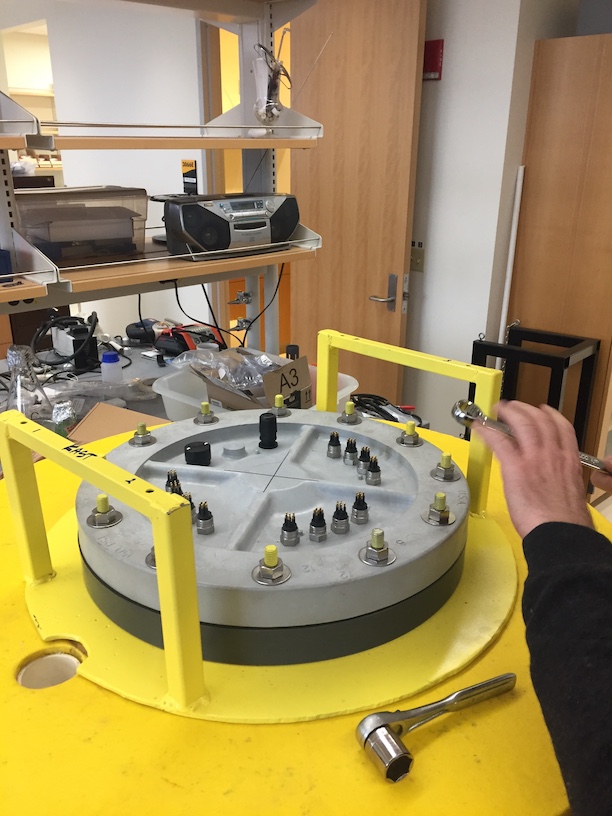
April 14, 2018: Todd Presents at MTS Buoy Workshop 2018
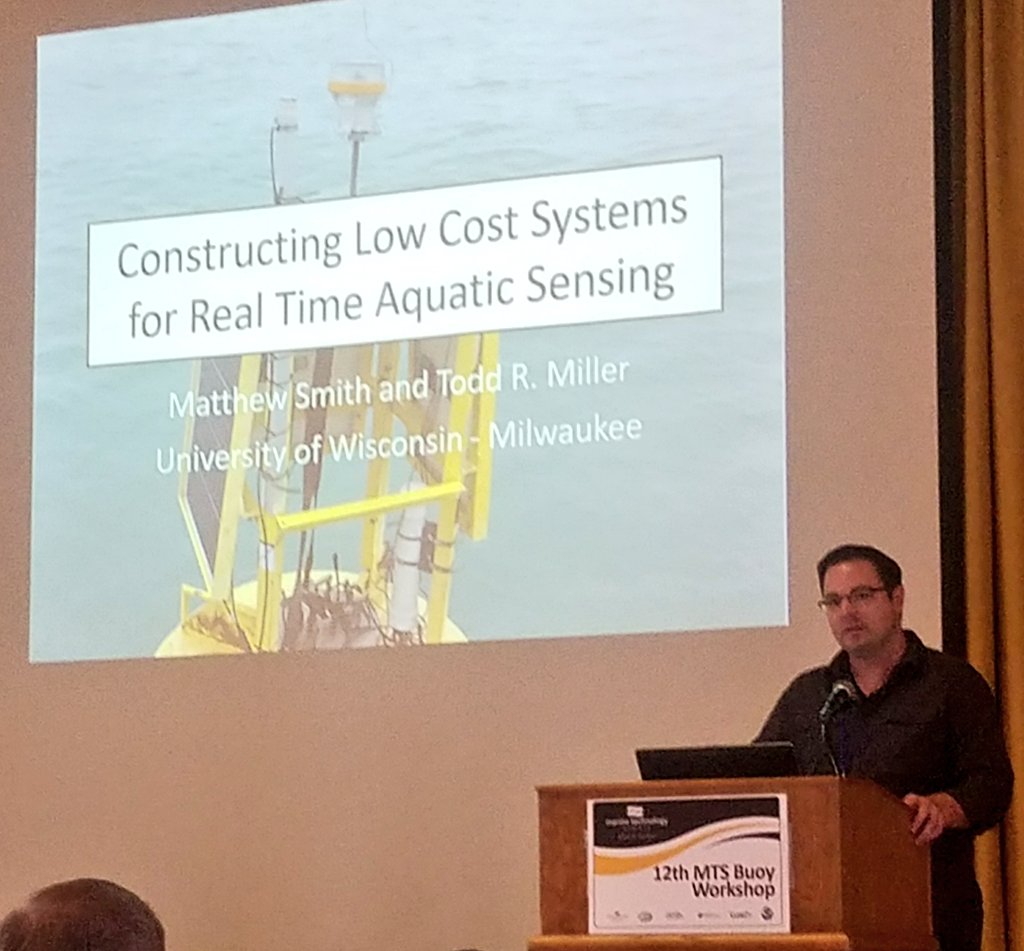 Mooring systems, data telemetry, hull design, wave models, and instrument design. Todd was in Ann Arbor this week presenting our work on constructing low cost aquatic sensors with the Matt Smith Lab (School of Freshwater Sciences) at the Marine Technology Buoy Workshop 2018. A link to the presentation is here.
Mooring systems, data telemetry, hull design, wave models, and instrument design. Todd was in Ann Arbor this week presenting our work on constructing low cost aquatic sensors with the Matt Smith Lab (School of Freshwater Sciences) at the Marine Technology Buoy Workshop 2018. A link to the presentation is here.
April 3, 2018: Green Bay Buoy Construction
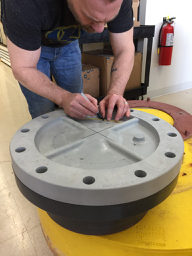 Making a new hatch for our Green Bay buoys this week. Stronger, bigger, and more efficient to open and close. In this photo Jeff is marking out new holes for bulk head connectors.
Making a new hatch for our Green Bay buoys this week. Stronger, bigger, and more efficient to open and close. In this photo Jeff is marking out new holes for bulk head connectors.
March 23, 2018: New Website!
New website launched! After six years it was time to retire the old website running on the unsecured and unsupported Drupal 6. The new site is running on the latest version of Drupal 8, with a few customizations thanks to Todd's dabbling in mysql and php. In addition, we will soon launch lakestat.com, our new site hosting up all of our high frequency in situ monitoring data.
